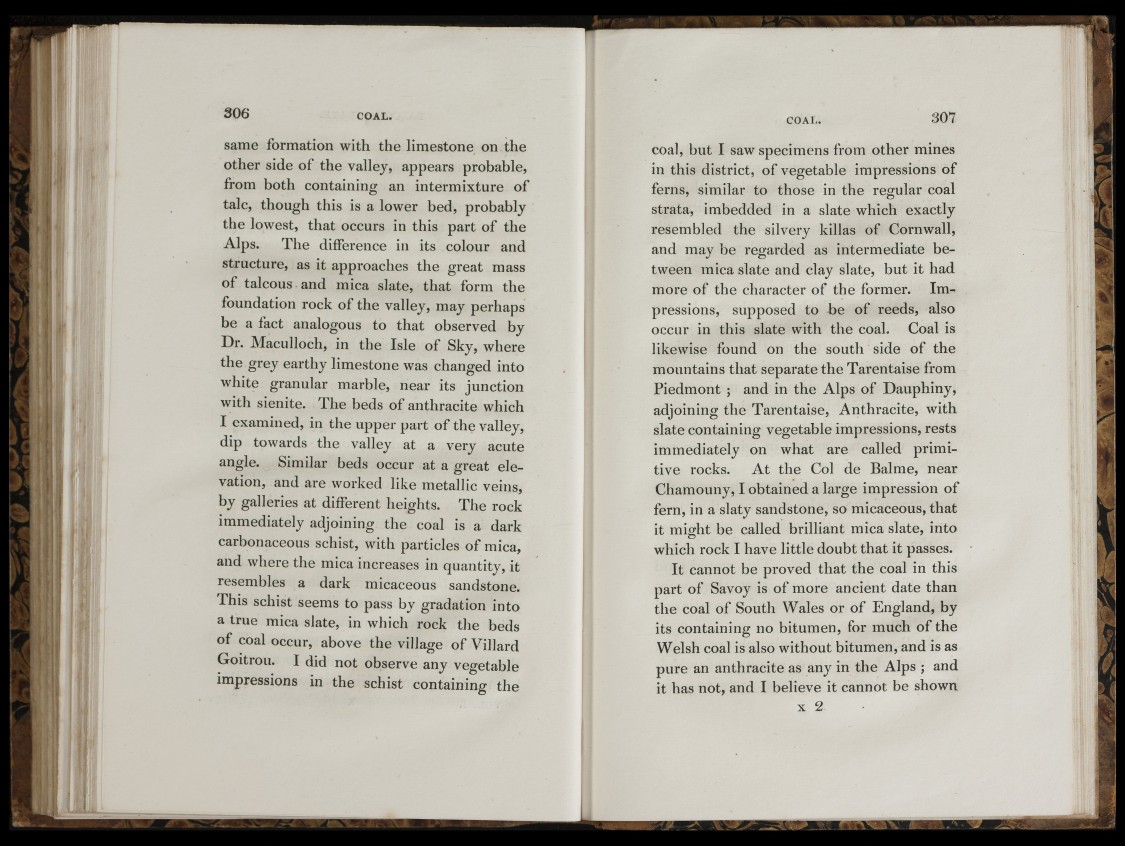
.ilfo
L_
same formation with the limestone on the
other side of the valley, appears probable,
from both containing an intermixture of
talc, though this is a lower bed, probably
the lowest, that occurs in this part of the
Alps. The difference in its colour and
structure, as it approaches the great mass
of talcous and mica slate, that form the
foundation rock of the valley, may perhaps
be a fact analogous to that observed by
Dr. Maculloch, in the Isle of Sky, where
the grey earthy limestone was changed into
white granular marble, near its junction
with sienite. The beds of anthracite which
I examined, in the upper part of the valley,
dip towards the valley at a very acute
angle. Similar beds occur at a great elevation,
and are worked like metallic veins,
by galleries at different heights. The rock
immediately adjoining the coal is a dark
carbonaceous schist, with particles of mica,
and where the mica increases in quantity, it
resembles a dark micaceous sandstone.
This schist seems to pass by gradation into
a true mica slate, in which rock the beds
of coal occur, above the village of Villard
Goitrou. I did not observe any vegetable
impressions in the schist containing the
coal, hut I saw specimens from other mines
in this district, of vegetable impressions of
ferns, similar to those in the regular coal
strata, imbedded in a slate which exactly
resembled the silvery killas of Cornwall,
and may be regarded as intermediate between
mica slate and clay slate, but it had
more of the character of the former. Impressions,
supposed to be of reeds, also
occur in this slate with the coal. Coal is
likewise found on the south side of the
mountains that separate the Tarentaise from
Piedmont ; and in the Alps of Dauphiny,
adjoining the Tarentaise, Anthracite, with
slate containing vegetable impressions, rests
immediately on what are called primitive
rocks. At the Col de Balme, near
Chamouny, I obtained a large impression of
fern, in a slaty sandstone, so micaceous, that
it mi^ht be called brilliant mica slate, into
which rock I have little doubt that it passes.
It cannot be proved that the coal in this
part of Savoy is of more ancient date than
the coal of South Wales or of England, by
its containing no bitumen, for much of the
Welsh coal is also without bitumen, and is as
pure an anthracite as any in the Alps ; and
it has not, and I believe it cannot be shown
X 2
k-
F